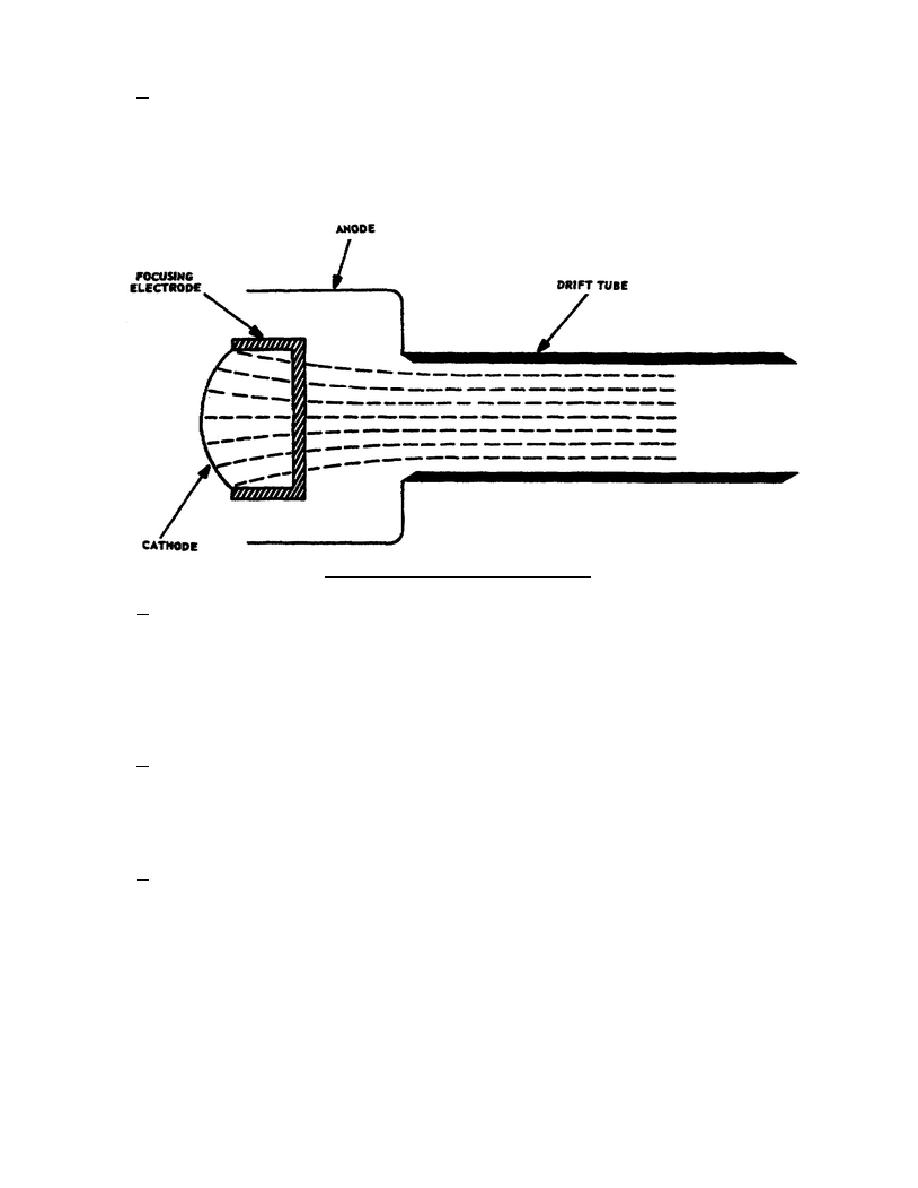
b. Figure 11 represents the electron source in a multicavity klystron. The cathode has a concave shape
which partly forms the emitted electrons into a beam. The focusing electrode is mounted so that it encircles the
outer edge of the cathode and is operated at the cathode potential. The anode is located next to the focusing
electrode and directs the electrons to enter the first drift tube. The body assembly of the klystron (anode, drift
tubes, and cavities) is operated at ground potential, and the cathode is operated at a high negative potential. A
strong electric field exists between the first drift tube and the cathode.
Figure 11. Electrons entering drift tube.
c. The electrons that leave the cathode are formed into a tighter beam by the zero or negative potential
of the focusing electrode. The strong electric field between the cathode and the first drift tube causes the electrons
to form into a converging beam which focuses inside the first drift tube section. The electric field does not extend
into the first drift tube any appreciable distance, so the mutually repellent forces of the electrons tend to spread the
beam. As the beam spreads out, the electrons strike the drift tube wall and set up current flow in the wall. This is
known as body current. A high body current causes the electron energy to be dissipated as heat and greatly
reduces the efficiency of the klystron.
d. To prevent the electron beam from spreading out, a magnetic focusing system is used to confine the
electron stream into a narrow beam. The magnetic field is symmetrical around the drift tube axis. The magnetic
focusing action shown in A of figure 12 causes the electrons to spiral down the drift tube. The spiral makes a
tighter circle as the electrons travel through the magnetic field. Part B of figure 12 shows how the magnetic lines
are axial in the drift tube.
e. Electrons released from the cathode are accelerated toward the drift tube and experience
only slight effects from the magnetic field. These electrons travel an almost straight-line path to
the drift tube entrance.
The overall effect of the magnetic field is to force all of the
electrons into the drift tube and keep them in a beam that will prohibit them from
344 L1
12


 Previous Page
Previous Page
